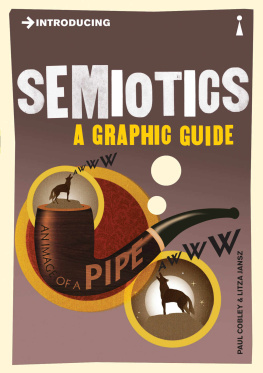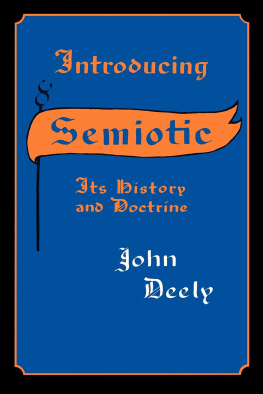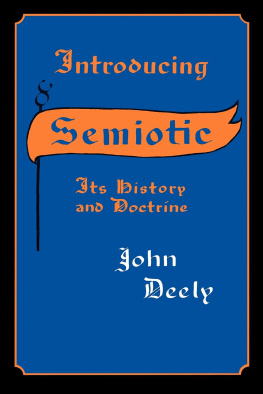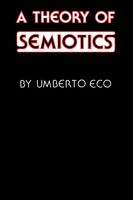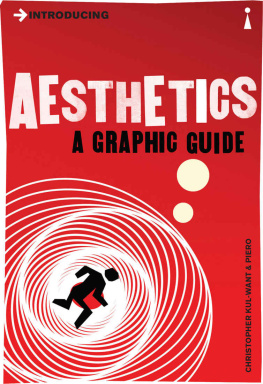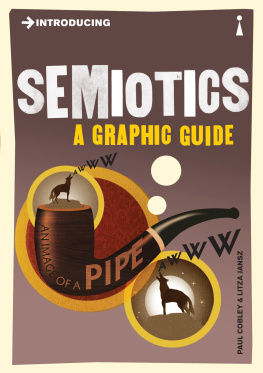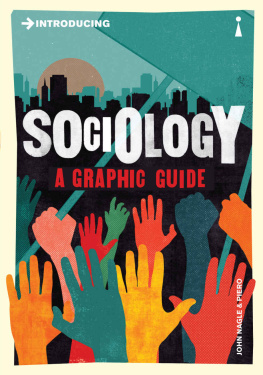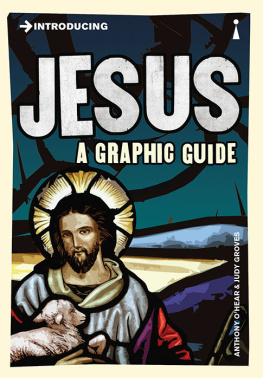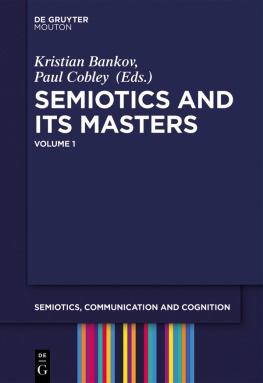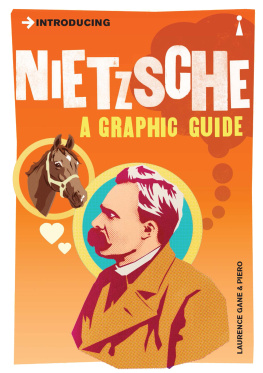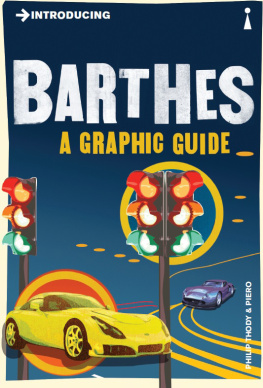Published by Icon Books Ltd, Omnibus Business Centre, 39-41 North Road, London N7 9DP
Email:
www.introducingbooks.com
ISBN: 978-184831-185-5
Text copyright 2012 Icon Books Ltd
Illustrations copyright 2012 Icon Books Ltd
The author and illustrator has asserted their moral rights
Originating editor: Richard Appignanesi
No part of this book may be reproduced in any form, or by any means, without prior permission in writing from the publisher.
Contents
If you go to the right cocktail parties, or hang around the foyers of the right cinemas, or read the right Sunday colour supplements, or watch the right late night arts programmes on TV, then you will know that semiotics is a valuable buzzword.
YOU HAVE TO UNDERSTAND SEMIOTICS TO UNDERSTAND CONTEMPORARY CULTURE. WHAT DOES THAT MEAN?
The Pre-History of Semiotics
Early precursors of semiotics include Plato (c. 428348 BCE*) whose Cratylus ponders the origin of language; and Aristotle (384322 BCE) who considers nouns in his Poetics and On Interpretation.
The word semiotics comes from the Greek root, seme, as in semeiotikos, an interpreter of signs. Semiotics as a discipline is simply the analysis of signs or the study of the functioning of sign systems.
The idea that sign systems are of great consequence is easy enough to grasp; yet the recognition of the need to study sign systems is very much a modern phenomenon.
IT SEEMS TO ME THAT THERE IS A DIFFERENCE BETWEEN THE CRIES OF ANIMALS AND THE SPEECH OF HUMANS. IT IS THE DIFFERENCE BETWEEN NATURAL SIGNS AND CONVENTIONAL SIGNS.
One of the most notable debates on signs in the Ancient world took place between the Stoics and the Epicureans (around 300 BCE in Athens).
The crux of the matter concerned the difference between natural signs (freely occurring throughout nature) and conventional signs (those designed precisely for the purpose of communication).
For the Stoics especially, the quintessential sign was what we know as the medical symptom.
LOOK. HIS COUNTENANCE IS FLUSHED. I THINK HE HAS A FEVER. ITS A SIGN!
The symptom remained the model sign for the Classical era.
The major foundation for the Western interrogation of signs was laid in the Middle Ages with the teachings of St. Augustine (354430).
Augustine developed his theory of signa data conventional signs. Contrary to Classical commentators, he promoted such signs as the proper objects of philosophical scrutiny.
GOD. GOD. I WONDER WHAT MADE ME SAY THAT?
He also served to narrow the focus of sign study by pronouncing on the way in which words seem to be the correlates of mental words.
Augustines narrowing of the focus was to have a serious impact on subsequent sign study.
Other scholars, such as the English Franciscan, William of Ockham (c. 12851349) exacerbated this version of the sign.
THE MAIN CATEGORIZATION OF SIGNS CONCERNS THOSE THAT ARE MENTAL AND PRIVATE, AND THOSE THAT ARE SPOKEN/WRITTEN IN ORDER, TO BE MADE PUBLIC. I SAW IN THE EXAMINATION OF SIGNIFYING PROCESSES A BASIS FOR A NEW LOGIC.
Although these figures in European philosophy are in some senses proto-semioticians, it is not until the 20th century that a full-blown semiotic awareness appears, under the auspices of two founding fathers.
Ferdinand de Saussure (18571913)AT THIS STAGE I WAS MORE INTERESTED IN SPECIFIC LANGUAGES IN HISTORY RATHER THAN A GENERAL LINGUISTICS.
In 1906 the University of Geneva, by fluke, provided the catalyst for him to produce a landmark in linguistics and, subsequently, semiotics.
Saussure was assigned the task of teaching a course in general linguistics (190611), a task he had not previously undertaken, and dealing with a topic upon which he would not publish in his lifetime.
Nevertheless, when Saussure died in 1913, his students and colleagues thought the course was so innovative that they reassembled it from their preserved notes and published it in 1916 as the Cours de linguistique gnrale.
SAUSSURES APPROACH TO LANGUAGE DIFFERS SIGNIFICANTLY FROM THAT WHICH 19TH CENTURY PHILOLOGISTS HAVE OFFERED US. PSST! CAN I BORROW YOUR NOTES?
In opposition to a historical diachronic linguistics which looks at the changes which take place over time in specific languages, Saussure pursued a synchronic linguistics. He presented an analysis of the state of language in general, an understanding of the conditions for existence of any language.
The Cours focussed on the nature of the linguistic sign, and Saussure made a number of crucial points which are integral to any understanding of the European study of sign systems.
Saussure defined the linguistic sign as a two-sided entity, a dyad. One side of the sign was what he called the signifier. A signifier is the thoroughly material aspect of a sign: if one feels ones vocal cords when speaking, it is clear that sounds are made from vibrations (which are undoubtedly material in nature). Saussure described the verbal signifier as a sound image.
DAMN! IVE GOT A BIT OF SIGNIFIER ON MY HAND
Inseparable from the signifier in any sign and, indeed, engendered by the signifier is what Saussure calls the signified.
This is a mental concept.
If we take the word dog in English (made up of the signifiers /d/, /o/ and /g/), what is engendered for the hearer is not the real dog but a mental concept of dogness:
CANINE, QUADRUPED, BARKS, HAS SHARP TEETH, WAGGLY TAIL, BURIES BONES, EATS BISCUITS, HOWLS, FETCHES STICKS, GROWLS, URINATES ON LAMP-POSTS

